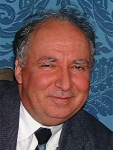How Sarvodaya Was Founded
INSPIRATIONAL, 18 Jan 2021
Dietrich Fischer – TRANSCEND Media Service
Dr. A.T. Ariyaratne (called “Ari” by his friends) was a high school physics teacher in Sri Lanka. But he felt that what he had to teach within the prescribed curriculum had little relevance for students’ lives. So he founded a movement of volunteers to address the serious problems ordinary people were facing. I
n 1958, he chose one of the poorest villages and assembled all the villagers in a public meeting. He asked them what their greatest problem was. They told him that at the beginning of each planting season, a money lender would come to their village and lend them some money to buy seeds and fertilizer. At harvest time, he would come back, and with the accumulated high interest, almost the entire harvest belonged to him and they could hardly feed their families.
Then he would again lend them a smaller sum so that they could buy seeds and fertilizer for the next crop. Ari asked them:
“How much money would you need to become independent?”
They said,
“We would need 400,000 rupees (about US$ 8,000) to buy what we need at the beginning of the planting season.”
He said,
“If you save 50,000 rupees, I will arrange a bank loan at a reasonable interest rate for you for the remaining 350,000 rupees.”
They told him,
“We are too poor, we cannot save anything.”
He said, “Alright, then you remain poor” and began slowly to walk out of the room. Few of them ran after him and said,
“We will try to save something.”
They saved the 50,000 rupees and he helped them borrow the remaining 350,000 from a bank at a low interest rate. They worked very hard, knowing that for the first time in their lives the entire harvest would be theirs. They had a good harvest, and could pay back the entire bank loan within one season. He met with the villagers again and asked them what they would like to do as their next project. To increase their harvest, they wished to rebuild the irrigation dams that had been destroyed in war during the 19th century.
They calculated how many days of work would be needed, and figured out that the people from their own village could provide half of the needed labor. Ari organized a group of volunteers from neighboring villages to donate the remaining labor. After that, they built a new school, a health clinic, and were well on the path to development.
A year later, two villages participated in this self-help movement. Two years later, four villages. The number of participating communities doubled nearly every year. In the year 2000, 55% of all villages in Sri Lanka had Sarvodaya projects, and the movement had two and a half million members. This shows how far a good idea and persistence in pursuing it can lead.
_______________________________________________
 Dietrich Fischer (1941-2015) from Münsingen, Switzerland, got a Licentiate in Mathematics from the University of Bern 1968 and his Ph.D. in Computer Science from New York University 1976. Fischer was a MacArthur Fellow in International Peace and Security at Princeton University 1986-88, has taught mathematics, computer science, economics and peace studies at various universities, and been a consultant to the United Nations. He was co-founder, with Johan Galtung, of the TRANSCEND Network for Peace, Development and Environment in 1993.
Dietrich Fischer (1941-2015) from Münsingen, Switzerland, got a Licentiate in Mathematics from the University of Bern 1968 and his Ph.D. in Computer Science from New York University 1976. Fischer was a MacArthur Fellow in International Peace and Security at Princeton University 1986-88, has taught mathematics, computer science, economics and peace studies at various universities, and been a consultant to the United Nations. He was co-founder, with Johan Galtung, of the TRANSCEND Network for Peace, Development and Environment in 1993.
Excerpted from Dietrich Fischer’s Stories to Inspire You – TRANSCEND University Press-TUP.
Tags: Inspirational
This article originally appeared on Transcend Media Service (TMS) on 18 Jan 2021.
Anticopyright: Editorials and articles originated on TMS may be freely reprinted, disseminated, translated and used as background material, provided an acknowledgement and link to the source, TMS: How Sarvodaya Was Founded, is included. Thank you.
If you enjoyed this article, please donate to TMS to join the growing list of TMS Supporters.

This work is licensed under a CC BY-NC 4.0 License.
